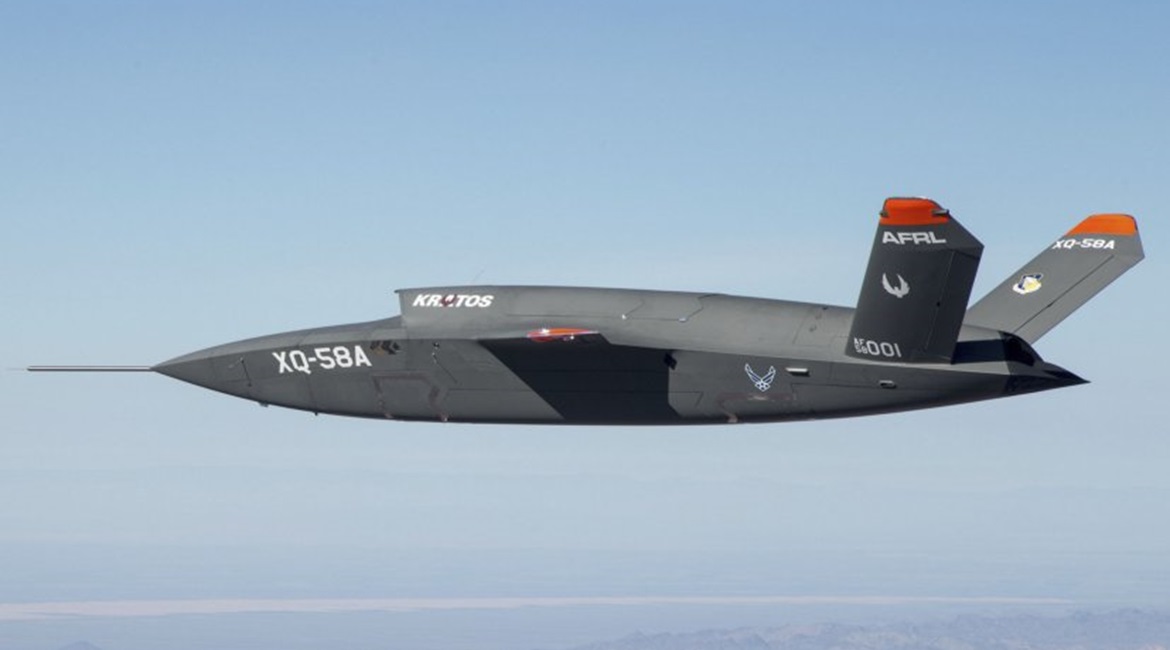
The US Air Force’s (USAF’s) Kratos XQ-58A Valkyrie long-range, high subsonic, unmanned air vehicle (UAV) demonstrator completed its first flight on 5 March, according to a service statement.
The runway-independent aircraft completed 76 minutes of flight time at Yuma Proving Ground, Arizona. USAF spokesperson Daryl Mayer said on 8 March that the aircraft has rocket-assisted takeoff with parachute recovery, similar to other Kratos platforms. He said that the aircraft performed system checkouts with flight qualities characteristics and control evaluation during this first flight.

The USAF’s Kratos XQ-58A Valkyrie performed its first flight on 5 March. (USAF)
The XQ-58A has five planned test flights in two phases with objectives that include evaluating system functionality, aerodynamic performance, and launch and recovery systems. Mayer said all flight qualities testing will take place within the next six months.
The time from contract award to first flight took just more than 2.5 years. The first flight was originally supposed to take place in January, but Mayer said there were many reasons for the delay, including programme scheduling and technical risks that needed to be resolved to ensure a successful first flight.
No payloads were carried during the first flight. Mayer said the ground control station (GCS) used to operate this first flight is based on Kratos’s investment and development. Kratos did not return a request for comment prior to publication.
The Air Force Research Laboratory (AFRL) partnered with Kratos to develop the aircraft. This joint effort falls within the service’s Low Cost Attritable Aircraft Technology (LCAAT) portfolio, which seeks to break the escalating cost trajectory of tactically-relevant aircraft. The objectives of LCAAT include designing and building UAVs faster by developing better design tools and maturing and leveraging commercial manufacturing processes to reduce build time and cost.
Looking to read the full article?
Gain unlimited access to Janes news and more...






